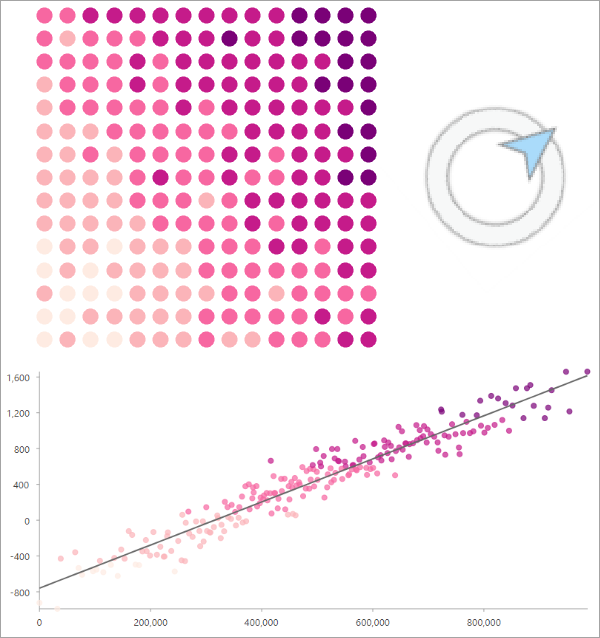| Label | Explanation | Data Type |
Input Features
| The input feature layer that will be used to calculate the directional trend. The input must be point or polygon features. For polygons, the centroids of the polygons will be used to create the chart. | Feature Layer |
Analysis Field
| The numeric field from the input feature layer that will be used to calculate the directional trend. | Field |
Direction of Trend
(Optional) | The direction of the trend. Provide the value as degrees clockwise from north. For example, 0 corresponds to north, 90 to east, 180 to south, and 270 to west. The value must be between 0 and 360. The default is 0. This parameter does not apply if you choose to determine the direction of strongest trend. The direction will generally not correspond to true cardinal directions. For example, 0 corresponds to the direction of the y-coordinates of the features, which may not be true north. | Double |
Determine Direction of Strongest Trend
(Optional) | Specifies whether the direction of the strongest trend will be determined by the tool. The direction of strongest trend is determined by finding the direction that maximizes the R-squared value for the provided polynomial order. When this parameter is checked, the value will be rounded to a whole number between 0 and 179.
| Boolean |
Polynomial Trend Order
(Optional) | Specifies the order of the polynomial that will be fitted to the data values.
| Long |
Derived Output
| Label | Explanation | Data Type |
| Updated Input Features With Chart | The feature layer with the directional trend chart. If the input features are a feature layer in the active map, the value will be empty. | Feature Layer |

